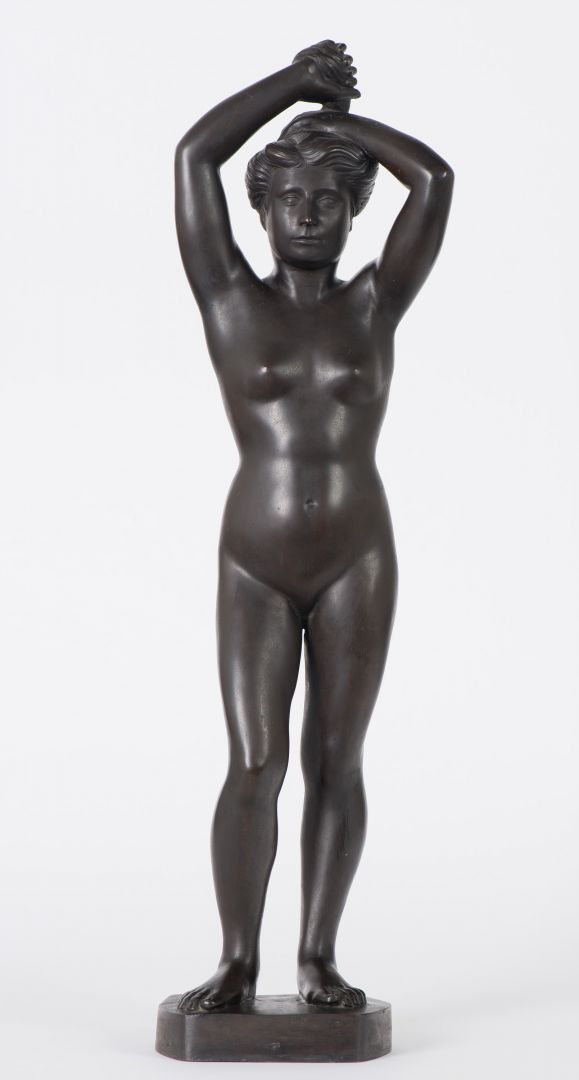Explorative Art - 2. view
Woman Combing her Hair
VEDRES Márk
Uzhhorod, 1870 – Budapest, 1961
Woman Combing her Hair, before 1911
After continuing his schooling in Paris, Márk Vedres settled in Florence in 1902, where a study of sculptural relics from the quattrocento and an awareness of the teachings of Adolf von Hildebrand focused his attention on the search for the ancient ideal of beauty. He turned his back on his former master, the Frenchman Auguste Rodin, and instead of virtuoso surface effects he concentrated on achieving compositional unity. His bucolic sculptures from the beginning of the century show the direct influence of renaissance bronze figurines.
His anti-Impressionist way of thinking was something he shared with the artists of the Eight, whose endeavours followed the art of Cézanne. In recognition of his artistic affinity, he was invited by the group of painters to exhibit as a guest at their second show in 1911. The statuettes Vedres presented in the rooms of the National Salon in Budapest – including the bronze figure, Woman Combing her Hair – were now completely free from all narrative gestures. His new sculptures, which were classically non-emotive and focused purely on questions of form, came in for much wellearned praise from contemporary critics.
